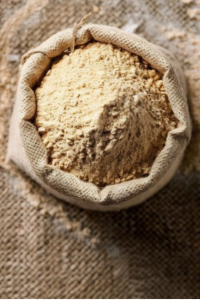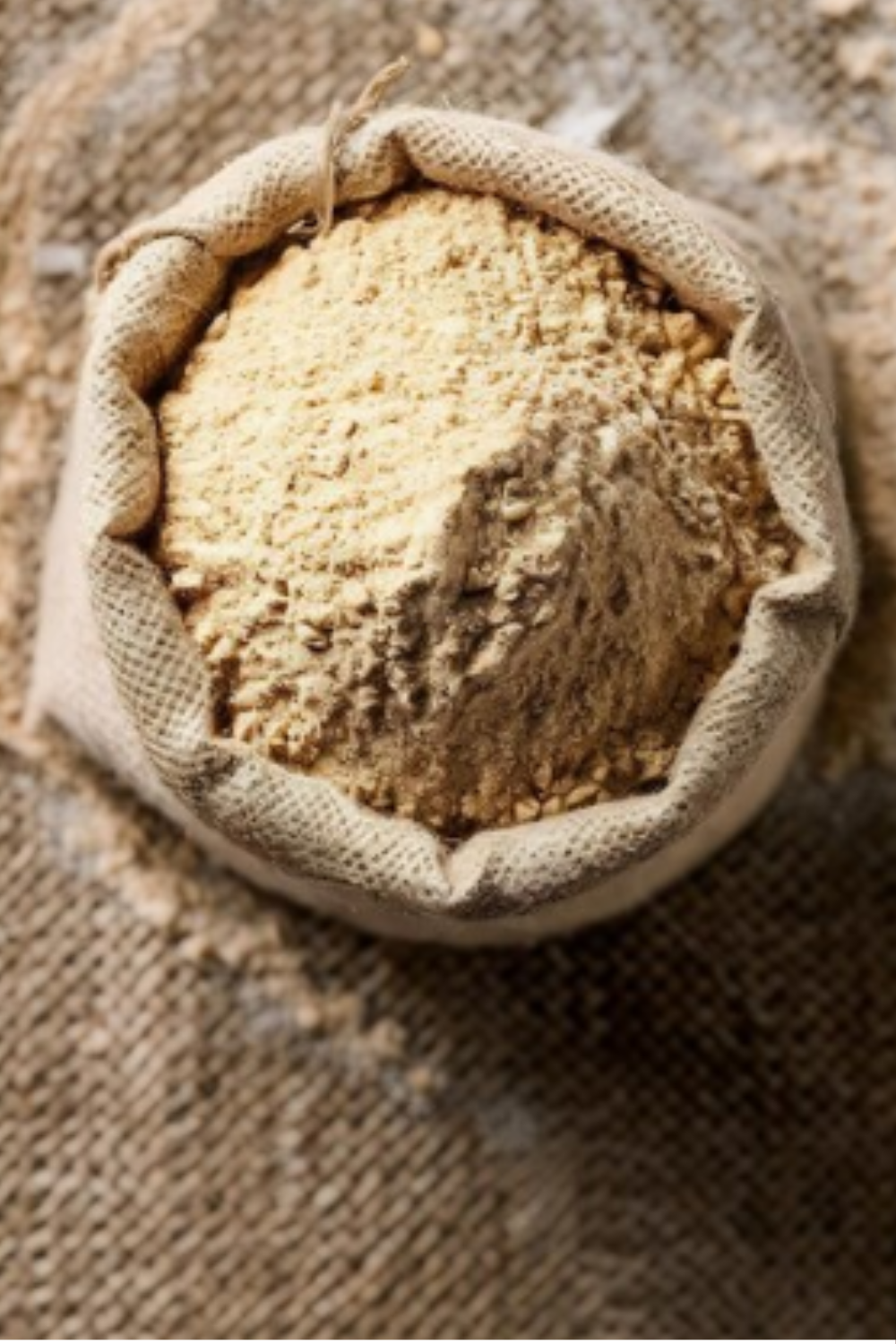BRC: Brown Rice Flour role in cakes Explained
In this topic, I’m going to talk about the role of BRC – Brown Rice Flour in cakes, drawing from my own personal experience.
BRC – Brown Rice Flour and Its Role in Cakes
Brown Rice Flour (BRC) is a gluten-free alternative to traditional wheat flour, derived from milling whole grain brown rice. Its popularity in baking, especially in gluten-free recipes, stems from its unique properties and nutritional benefits. Unlike refined white flour, BRC retains the bran and germ layers of the rice grain, offering higher fiber content and a richer flavor profile. Check out the right Brown Rice Flour, cake tools, and ingredients that you need here.

The Role of BRC in Cakes
When used in cakes, BRC contributes significantly to texture and moisture. Its fine texture blends well with other gluten-free flours like almond flour or tapioca flour, creating a balanced structure without the heaviness often associated with gluten-free baking. The absorbent nature of brown rice flour helps cakes retain moisture, resulting in a softer and more tender crumb.
Texture and Structure
BRC adds a slightly grainy texture to cakes, which can be desirable for certain recipes, providing a delightful contrast to the smoothness of the cake’s crumb. This texture also enhances the mouthfeel, making each bite satisfyingly substantial.
Nutritional Benefits
Apart from its functional benefits in baking, BRC enriches cakes with essential nutrients. It contains vitamins B1, B3, and B6, along with minerals like manganese and magnesium, contributing to a healthier treat option compared to cakes made solely with refined flours. Check out the right Brown Rice Flour, cake tools, and ingredients that you need here.
Tips for Using BRC in Cakes
- Blend with Other Flours: Combine BRC with almond flour or coconut flour for a more balanced texture and flavor profile.
- Adjust Liquid Content: Due to its absorbency, recipes may require slight adjustments in liquid content to achieve the desired consistency.
- Enhance Flavor: Experiment with adding vanilla extract, citrus zest, or spices like cinnamon to complement the nutty flavor of BRC.
Brown Rice Flour into cakes not only caters to those with gluten intolerance but also enhances the nutritional value and texture of your baked goods. Whether you’re looking to explore gluten-free baking or simply seeking to diversify your flour choices, BRC offers a versatile and nutritious option that promises delightful results in every slice. Check out the right Brown Rice Flour, cake tools, and ingredients that you need here.
Drilling Deeper – Comparing BRC with Other Flours
When comparing BRC – Brown Rice Flour with other commonly used flours in baking, such as almond flour and coconut flour, it’s essential to consider their distinct characteristics and how they influence the final product.
BRC vs. Almond Flour
Texture and Flavor: Almond flour, made from finely ground almonds, adds a rich, nutty flavor and a moist texture to cakes. It’s higher in fat and lower in carbohydrates compared to BRC, which affects the structure and density of baked goods.
Nutritional Profile: Almond flour is notably higher in protein and healthy fats, making it a nutritious choice for those seeking to increase their intake of these nutrients. However, it lacks the fiber content found in BRC, which can impact the overall texture and mouthfeel of cakes.
Usage: Almond flour works well in recipes where a denser, more substantial texture is desired, such as in certain types of cakes and cookies. It also adds a natural sweetness, reducing the need for additional sugars. Check out the right Brown Rice Flour, cake tools, and ingredients that you need here.
BRC vs. Coconut Flour
Absorbency and Texture: Coconut flour is highly absorbent and requires significantly more liquid than both BRC and almond flour. This characteristic can make it challenging to use alone in baking but contributes to a light and airy texture when combined with other flours.
Flavor Profile: Coconut flour imparts a subtle coconut flavor to baked goods, which may not be desirable in all recipes but can complement certain flavors like chocolate or tropical fruits.
Nutritional Content: Coconut flour is high in fiber and low in carbohydrates, making it suitable for low-carb diets. However, its unique properties necessitate adjustments in recipes to achieve the desired consistency and texture.
In essense, each flour BRC, almond flour, and coconut flour brings its own set of benefits and challenges to gluten-free baking. BRC – Brown Rice Flour stands out for its balanced texture, nutritional profile, and versatility in various cake recipes. Understanding these differences allows bakers to make informed choices based on dietary needs, flavor preferences, and desired baking outcomes. Check out the right Brown Rice Flour, cake tools, and ingredients that you need here.
comparison tabular
Below is a comparison table highlighting the key considerations when using BRC (Brown Rice Flour), almond flour, and coconut flour in baking:
| Aspect | BRC – Brown Rice Flour | Almond Flour | Coconut Flour |
|---|---|---|---|
| Texture | Slightly grainy texture, good moisture retention | Moist, dense texture | Light and airy when combined, highly absorbent |
| Flavor | Nutty, slightly earthy | Rich, nutty | Mild coconut flavor |
| Nutritional Content | Rich in fiber, vitamins (B1, B3, B6), minerals (manganese, magnesium) | High in protein, healthy fats | High in fiber, low in carbohydrates |
| Usage | Versatile in gluten-free baking, good structure | Dense, adds moisture and richness | Requires more liquid, light texture |
| Challenges | May require adjustments in recipes for consistency | Can be dense if not balanced properly | Absorbs a lot of liquid, can be drying |
| Best For | Gluten-free cakes, cookies, pancakes | Cakes, cookies, quick breads | Light cakes, pancakes, thickening agent |
| Considerations | Adjust liquid content for optimal texture | Adds richness and moisture, high fat content | Requires more eggs or binding agents |
Key Notes and Considerations
- Texture and Moisture: BRC offers a slightly grainy texture with good moisture retention, while almond flour provides a dense, moist texture. Coconut flour, on the other hand, requires more liquid and results in a light and airy texture.
- Flavor Profile: BRC has a nutty, earthy flavor, almond flour adds a rich nuttiness, and coconut flour introduces a subtle coconut flavor.
- Nutritional Benefits: BRC is high in fiber and essential vitamins/minerals, almond flour is rich in protein and healthy fats, and coconut flour is high in fiber and low in carbohydrates.
- Versatility: BRC is versatile in gluten-free baking applications, almond flour adds density and moisture, and coconut flour works well in recipes requiring absorbency and light texture.
- Challenges: Each flour has unique challenges such as adjusting liquid content for BRC, balancing density for almond flour, and managing absorbency for coconut flour. Check out the right Brown Rice Flour, cake tools, and ingredients that you need here.
FAQs on Using BRC (Brown Rice Flour) in Baking
1. Can I substitute BRC for all-purpose flour in any cake recipe?
While you can substitute BRC for all-purpose flour in many cake recipes, you may need to adjust the liquid content slightly due to BRC’s absorbency. It’s best to start with recipes specifically developed for gluten-free baking or experiment with small adjustments.
2. How does BRC affect the texture of cakes compared to wheat flour?
BRC typically produces a slightly denser texture with a pleasant graininess. It adds moisture and helps create a tender crumb, though the final texture may differ from cakes made with wheat flour. Mixing BRC with other gluten-free flours like almond or tapioca flour can enhance texture and structure.
3. What are the nutritional benefits of using BRC in cakes?
BRC is rich in fiber, vitamins (such as B1, B3, B6), and minerals like manganese and magnesium. These nutrients contribute to a healthier option compared to cakes made with refined flours, providing more balanced energy release and promoting digestive health.
4. How can I enhance the flavor of cakes made with BRC?
To enhance the flavor of cakes made with BRC, consider adding ingredients like vanilla extract, citrus zest, spices such as cinnamon or nutmeg, or even a touch of honey or maple syrup. These additions complement BRC’s nutty flavor and contribute to a more enjoyable eating experience.
5. Are there any tips for ensuring successful baking with BRC?
Ensure your BRC is fresh and store it in an airtight container in a cool, dry place to maintain its quality. Experiment with different ratios when blending BRC with other gluten-free flours to find the balance that works best for your recipes. Additionally, always follow baking recipes closely, especially when adapting from wheat flour to BRC, to achieve optimal results. Check out the right Brown Rice Flour, cake tools, and ingredients that you need here.
Final Words
Incorporating BRC – Brown Rice Flour into your baking repertoire opens up a world of possibilities for gluten-free treats that are nutritious and delicious. Whether you’re exploring gluten-free baking for dietary reasons or simply seeking to diversify your baking skills, BRC offers a versatile and wholesome alternative to traditional flours. Experiment with different recipes, flavors, and combinations to discover the joys of baking with BRC and enjoy the satisfaction of creating homemade treats that everyone can savor.

Hi!
I’m Mike, the creator of Forum Foodies. In my own personal experience, understanding ingredients is key to great cooking.
Forum Foodies offers guides on various ingredients, from staples to exotic finds. Join our community, share your experiences, and learn from fellow food lovers.
Have questions or suggestions? Email me at info@forumfoodies.com. Let’s embark on this delicious adventure together.
Happy cooking.
Mike/
Related Posts
- CRF: Cashew Rice Flour role in cakes Clarified
In this topic, I'm going to talk about the role of CRF - Cashew Rice…
- BRH: Brown Rice Husk role in cakes Explained
When it comes to baking, the quest for healthier and more unique ingredients is never-ending.…
- BFW: Buckwheat Flour role in cakes Clarified
In this topic, I'm going to talk about Buckwheat Flour (BFW) and its role in…
- CCTF: Chocolate Cake Flour role in cakes Explained
In this topic, I'm going to talk about a crucial ingredient in baking: Chocolate Cake…
- OGF: Organic Flour role in cakes Explained
In this topic, I'm going to talk about organic flour in my own personal experience.…
- DF: Date Flour role in cakes Explained
In this topic, I'm going to talk about date flour and its role in cakes,…
- AFS: Almond Flour Sponge role in cakes Clarified
In this topic, I'm going to talk about the role of almond flour sponge in…
- CWF: Corn Wheat Flour role in cakes Explained
In this topic, I'm going to talk about CWF - Corn Wheat Flour, based on…
- HPF: High-Protein Flour role in cakes Clarified
In this topic, I'm going to talk about High-Protein Flour (HPF) and its role in…
- GLF: Gluten-Free Flour role in cakes Explained
In this topic, I'm going to talk about gluten-free flour, drawing from my own personal…
- BPC: Brown Pecan its role in cakes Explained
In this topic, I'm going to talk about BPC - Brown Pecan and its role…
- CCFL: Corn Cream Flour role in cakes Clarified
In this topic, I'm going to talk about CCFL - Corn Cream Flour in my…
- IFP: Instant Flour Paste role in cakes Explained
In this topic, I'm going to talk about the role of Instant Flour Paste (IFP)…
- BGF: Buckwheat Grain Flour role in cakes Clarified
In this topic, I'm going to talk about the role of Buckwheat Grain Flour (BGF)…
- CFD: Corn Flour Dough role in cakes Explained
In this topic I'm going to talk about CFD - Corn Flour Dough in my…





